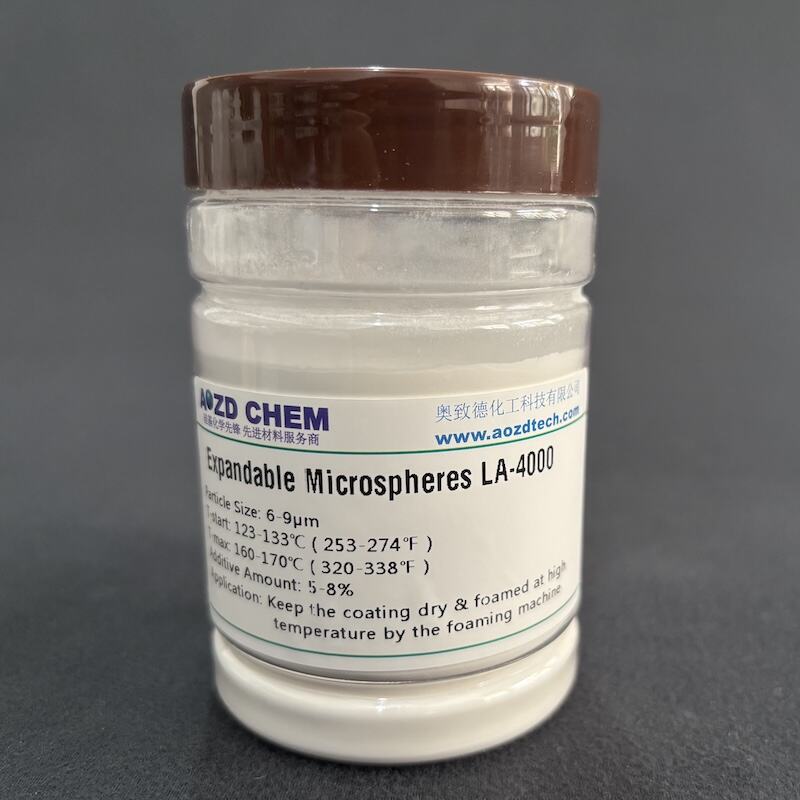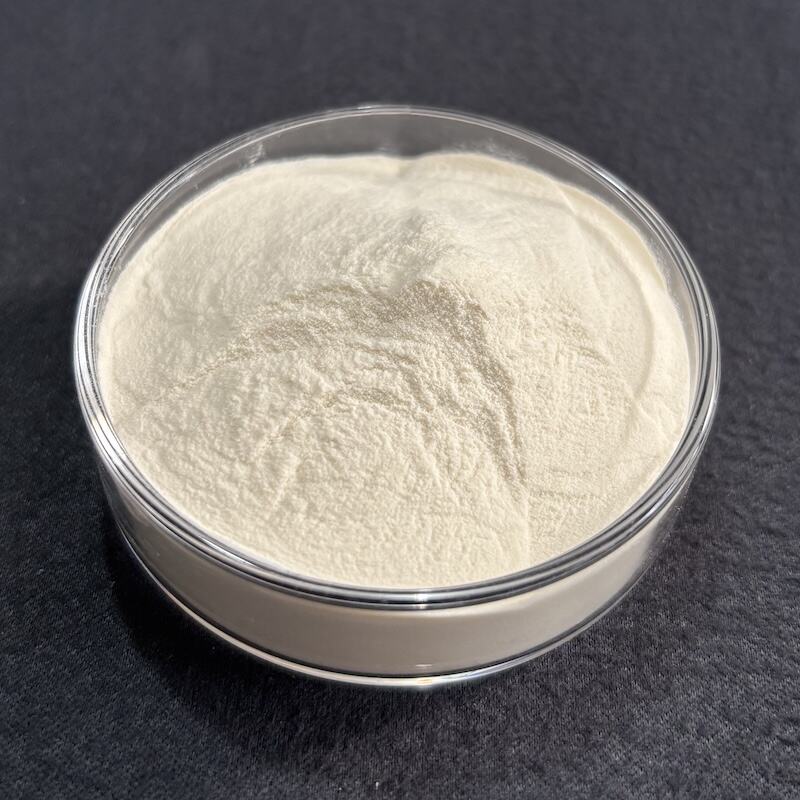Რევოლუციური ბუნების გაგება Გაფართოებადი მიკროსფერები
Გამსხვილებული მიკროსფეროები წარმოადგენს მასალათმცოდნეობის სფეროში რევოლუციურ პროგრესს, რომელიც სპეციფიკურ გაფართოების შესაძლებლობებს სთავაზობს და რამდენიმე ინდუსტრიის გარდაქმნას უზრუნველყოფს. ამ განსაკუთრებულ თერმოპლასტიკურ მიკროსფეროებში ჰიდრონაღვის გაზია გადახურული სპეციალური პოლიმერული გარსით, რაც საშუალებას აძლევს მათ გაფართოებას სითბოს ზემოქმედებისას. Expancel-ის მიკროსფეროების ტექნოლოგია მნიშვნელოვნად განვითარდა მათი შექმნიდან გამომდინარე და ინჟინრებსა და წარმოების სპეციალისტებს მოუწოდებელ ხელსაწყოს უწევს მსუბუქი, თბოიზოლაციური და მაღალი ფუნქციონალობის მქონე მასალების შესაქმნელად.
Expancel-ის მიკროსფეროების განმასხვავებელი თვისებები მიიღებულია მათი ზუსტად შემუშავებული სტრუქტურისა და შემადგენლობის წყალობით. როდესაც ისინი გახურდება აქტივაციის ტემპერატურამდე, ეს მიკროსკოპული სფეროები შეიძლება გაიზარდოს ორიგინალური მოცულობის 40-ჯერ მეტამდე, რაც ქმნის საშუალებას პროდუქტის შემუშავებისა და მასალის გაუმჯობესებისთვის. ეს გამორჩეული გაფართოების შესაძლებლობა, დაბალი სიმკვრივისა და აღნიშნული იზოლაციის თვისებების კომბინაცია, ხდის მათ არსებით მნიშვნელობის მქონეს სხვადასხვა სექტორში.
Expancel-ის მიკროსფეროების გაფართოების ძირეული მახასიათებლები
Ტემპერატურით გამოწვეული გაფართოების პროცესი
Expancel მიკროსფეროების გაფართოების მექანიზმი წარმოადგენს საკმაოდ რთულ პროცესს, რომელიც ხდება მაშინ, როდესაც ნაწილაკები გარკვეულ ტემპერატურულ დიაპაზონში ხდება. სითბოს მოქმედებისას პოლიმერული გარსი ხდება მკვრივი, ხოლო შიდა ნახშირწყალბადის აირი იზრდება წნევით. ეს კომბინაცია იწვევს მიკროსფეროს მნიშვნელოვან გაფართოებას, რის შედეგადაც იზრდება მოცულობა, ხოლო სფერული ფორმა ინარჩუნება. გაფართოების პროცესი ზუსტად კონტროლდება, რაც საშუალებას აძლევს მწარმოებლებს მიიღონ მუდმივი შედეგები თავისი აპლიკაციებისთვის.
Expancel-ის მიკროსფეროების სხვადასხვა სორტები შეიქმნა სხვადასხვა ტემპერატურულ დიაპაზონში აქტივაციისთვის, როგორც წესი, 80°C-დან 200°C-მდე. ეს მრავალფეროვნება საშუალებას აძლევს მწარმოებლებს აირჩიონ ყველაზე შესაბამისი სორტი თავისი კონკრეტული დამუშავების მოთხოვნებისა და საბოლოო გამოყენების მიზნებისთვის. გაფართოების პროცესი შეუქცევადია, რაც უზრუნველყოფს გაფართოებული მიკროსფეროების ახალი ზომისა და თვისებების შენარჩუნებას პროდუქის მთელი სიცოცხლის მანძილზე.
Გაფართოების დროს მოცულობისა და სიმკვრივის ცვლილება
Expancel-ის მიკროსფეროების ყველაზე შესამჩნევი ასპექტი მათი მოცულობის დრამატიულად შეცვლის უნარია, რაც სიმკვრივეს მნიშვნელოვნად ამცირებს. გაფართოების დროს მიკროსფეროები შეიძლება მოცულობა 40-ჯერ გაზარდონ, ხოლო მათი სიმკვრივე პროპორციულად შემცირდეს. მოცულობასა და სიმკვრივეს შორის ამ შებრუნებულ კავშირს აქვს ულტრამსუბუქი მასალების შექმნის შესაძლებლობა, რომლებსაც ახასიათებთ გამოჩენილი იზოლაციის თვისებები.
Გაფართოებულ მიკროსფეროებს ჩვეულებრივ აღწევს სიმკვრივე 25-35 კგ/მ³-მდე, რაც მათ იდეალურ არჩევანად აქცევს იმ აპლიკაციებისთვის, სადაც წონის შემცირება მნიშვნელოვანია. ეს თვისება მნიშვნელოვან გავლენას ახდენს იმ ინდუსტრიებზე, რომლებიც მასალის გამოყენების მინიმიზაციას ცდილობენ, რათა შეინარჩუნონ ან გააუმჯობინონ პროდუქის მუშაობა.
Გაფართოებაზე მოქმედი ფიზიკური და ქიმიური თვისებები
Გარსის შემადგენლობა და სტრუქტურა
Expancel-ის მიკროსფეროების პოლიმერული გარსი შექმნილია სპეციფიკური ქიმიური შედგენილობით, რათა ოპტიმიზდეს გაფართოების მახასიათებლები. გარსის მასალა ჩვეულებრივ შედგება სპეციალიზებული კოპოლიმერებისგან, რომლებიც უზრუნველყოფენ სიმტკიცისა და ლაგის იდეალურ ბალანსს, რაც საჭიროა კონტროლირებადი გაფართოებისთვის. ამ პოლიმერების შერჩევა ხდება სტურქტური მთლიანობის შესანარჩუნებლად გაფართოების პროცესში, ამავე დროს მაქსიმალური მოცულობის ზრდის შესაძლებლობის უზრუნველყოფით.
Გარსის სისქე და ერთგვაროვნება მნიშვნელოვან როლს ასრულებს გაფართოების მახასიათებლების განსაზღვრაში. წარმოებლებს შეუძლიათ ამ პარამეტრების მოდიფიცირება სხვადასხვა გაფართოების კოეფიციენტებით და ტემპერატურული მგრძნობელობით მიკროსფეროების შესაქმნელად, რაც საშუალებას აძლევს კონკრეტული გამოყენებისთვის მორგებას.

Შიდა აირის თვისებები
Ჰიდროკარბონური გაზი, რომელიც ჩაკეტილია Expancel-ის მიკროსფეროებში, ფუნდამენტურია მათი გაფართოების უნარისთვის. აირის არჩევანი და მისი საწყისი წნევა ყურადღებით კონტროლდება წარმოების დროს სასურველი გაფართოების მახასიათებლების მისაღწევად. გაზს უნდა ჰქონდეს შესაფერისი ორთქლის წნევის მრუდი და თერმული სტაბილურობა, რათა უზრუნველყოს სანდო გაფართოების ქცევა სასურველ ტემპერატურულ დიაპაზონში.
Გაფართოების პროცესში, ტემპერატურის მატებასთან ერთად იზრდება გაზის შიდა წნევა, რაც მოქმედებენ რბილ პოლიმერულ გარსზე. ეს ურთიერთქმედება გაზის წნევასა და ქერქის თვისებებს შორის განსაზღვრავს მიკროსფეროების საბოლოო გაფართოებულ ზომასა და ფორმას.
Აპლიკაციის სპეციფიკური გაფართოების მოთხოვნები
Დამუშავების ტემპერატურის გათვალისწინება
Განსხვავებული გამოყენებები მოითხოვს კონკრეტულ გაფართოების ტემპერატურებს დამუშავების შეზღუდვებისა და საბოლოო გამოყენების მოთხოვნების მიხედვით. წარმოებლებმა ზუსტად უნდა მოახდინონ Expancel მიკროსფეროების შერჩევა შესაბამისი აქტივაციის ტემპერატურით, რომელიც შეესაბამება მათ დამუშავების შესაძლებლობებს და პროდუქის სპეციფიკაციებს. ტემპერატურული დიაპაზონი უნდა იყოს საკმარისად ვიწრო, რათა უზრუნველყოს კონტროლირებადი გაფართოება, მაგრამ საკმარისად ფართო, რომ შეიცავდეს დამუშავების ცვალებადობას.
Გახურების სიჩქარე და ხანგრძლივობა ასევე მნიშვნელოვნად აისახება გაფართოების შედეგებზე. დამუშავების დროს ტემპერატურის შესაბამისი კონტროლი უზრუნველყოფს ოპტიმალურ გაფართოებას და ახშობს მიკროსფეროების ან მათი გარშემო არსებული მასალების თერმულ დეგრადაციას.
Გარემოს სტაბილურობის მოთხოვნები
Გაფართოებულმა Expancel-ის მიკროსფეროებმა უნდა შეინარჩუნონ მათი თვისებები სხვადასხვა გარემოს პირობებში. ამაში შედის წყალგამძლობა, ქიმიკატების მიმართ მდგრადობა და ტემპერატურის რყევები საბოლოო გამოყენების პირობებში. გაფართოებული მიკროსფეროების სტაბილურობა მნიშვნელოვანია პროდუქის გრძელვადიანი შესრულებისა და საიმედოობისთვის.
Მიკროსფეროების სხვადასხვა გარიგება განსხვავებულ დონეზე გვთავაზობს გარემოს წინააღმდეგობას, რაც საშუალებას აძლევს მწარმოებლებს აირჩიონ ყველაზე შესაფერისი ვარიანტი თავისი კონკრეტული გამოყენების მოთხოვნების შესაბამისად. ამაში შედის UV სტაბილურობის, ქიმიური წინააღმდეგობის და თერმული ციკლირების განხილვა.
Ხშირად დასმული კითხვები
Როგორ ახდენს ტემპერატურის ცვალებადობა გავლენას Expancel-ის მიკროსფეროების გაფართოებაზე?
Ტემპერატურის ცვალებადობა პირდაპირ აიმოქმედებს Expancel-ის მიკროსფეროების გაფართოების სიჩქარეს და საბოლოო მოცულობას. გაფართოების პროცესი იწყება აქტივაციის ტემპერატურაზე და გრძელდება მაქსიმალური გაფართოების ტემპერატურის მიღწევამდე. თანაბარი გაფართოების შედეგების მისაღებად მნიშვნელოვანია ტემპერატურის მუდმივი კონტროლი.
Შეიძლება თუ არა Expancel-ის მიკროსფეროების განების გაფართოება საწყისი აქტივაციის შემდეგ?
Არა, Expancel-ის მიკროსფეროების გაფართოების პროცესი შეუქცევადია. ერთხელ გაფართოების შემდეგ მიკროსფეროები ვეღარ გაფართოვდება ხელახლა გახურებით. ეს მუდმივი ცვლილება უზრუნველყოფს პროდუქის მდგრად თვისებებს მასალის მთელი სიცოცხლის მანძილზე.
Რა განსაზღვრავს Expancel-ის მიკროსფეროების მაქსიმალურ გაფართოების კოეფიციენტს?
Მაქსიმაური გაფართოების კოეფიციენტი განისაზღვრება რამდენიმე ფაქტორით, მათ შორის პოლიმერული გარსის შემადგენლობით, შიდა წნევით, საწყისი ნაწილაკების ზომით და დამუშავების პირობებით. ეს პარამეტრები დამზადების დროს ზუსტად კონტროლდება, რათა მიიღონ კონკრეტული გაფართოების შესაძლებლობები სხვადასხვა სორტის მიკროსფეროებისთვის.

